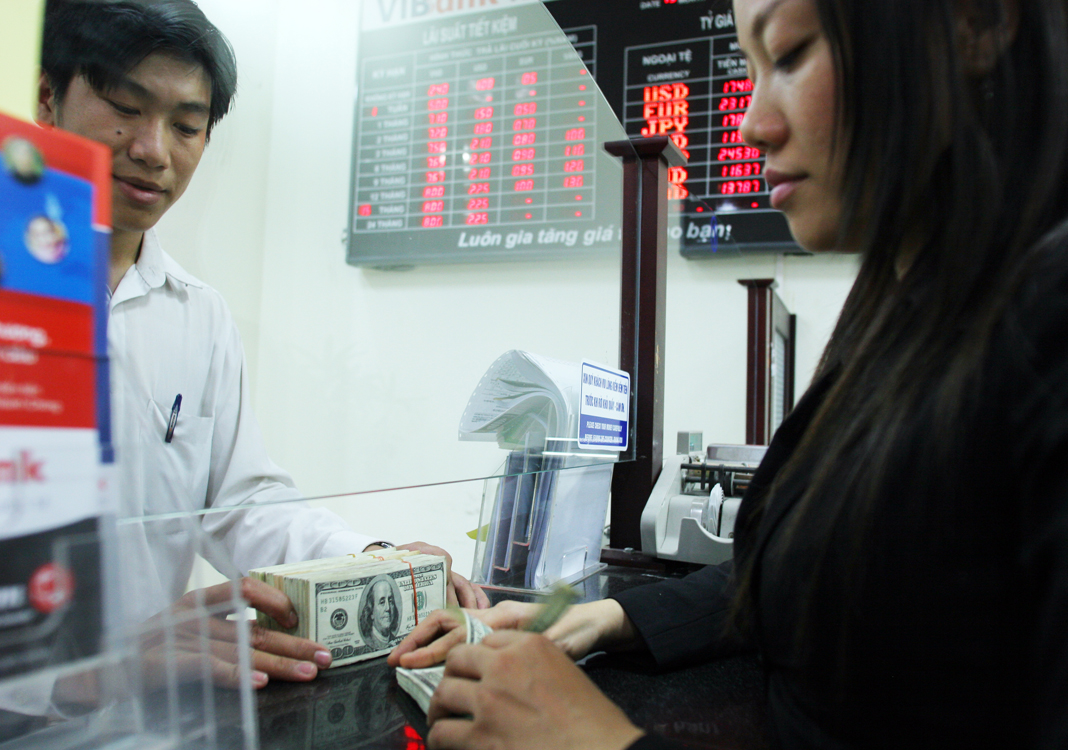Quite a few investors and State authorities are looking forward to the Q2 business results of listed enterprises. During the past three months, all economic sectors were badly hit by the Covid-19 pandemic. However, contrary to the pessimistic view of many, the banking industry seems to be faring well. Yet worries remain.
VPBank has published its financial statement for the second quarter of 2020, according to which the bank posted profit before tax of more than VND3.67 trillion, a hike of 43.5% year-on-year. That means VPBank’s profit before tax for the first half of the year is some VND6.58 trillion, up 51.6% against the year-ago period and meeting 64% of its business plan for the whole year.
These numbers may prompt some to think that the impact of Covid-19 on the Vietnamese economy is negligible albeit not the case. Earlier, a banker form Vietcombank, which gained the biggest profit in the banking industry, said their business results (profit in particular) in the first six months of 2020 would be equivalent to that of 2019, i.e. around VND11.3 trillion. Although Vietcombank’s profit growth rate is not as high as VPBank’s, entrepreneurs who are seeking loans to rescue their business mired in trouble may not figure out how Vietcombank could make it.
Previously, all information about the economy was unfavorable to the performances of the banking industry—such as slower credit growth and clients facing insolvency and failure to repay the principal on time. Besides, as requested by the Government, banks had to launch many preferential credit packages to support companies affected by Covid-19.
However, the business results of VPBank and information from the annual general shareholders’ meetings of several banks in June paint a completely different picture of the whole industry in the second quarter of 2020. It shows that many lenders still gained favorable results and were able to maintain positive growth momentum (1). This is in stark contrast to previous forecasts.
Advantages enjoyed by banks
Despite multiple hardships, banks have significant advantages in achieving the above results. Firstly, they were allowed to carry out debt restructuring in accordance with Circular 01-2020 issued by the State Bank of Vietnam (SBV). As per this circular, banks kept the debt categories unchanged even if their clients cannot pay the principal due to Covid-19. Simply put, under normal circumstances when a client fails to pay the principal in due time, the bank will modify the debt categories according to the actual number of the days of unpaid debt and stop keeping account of interest receivable. However, current regulations allow banks to continue recording interest and fees receivable even if borrowers are unable to repay the principal.
Secondly, above all, deposit rates were strongly declining in the first half of 2020. The SBV twice lowered the deposit rate ceiling and banks once simultaneously cut their deposit rates for all terms. Subsequently, interest rates for deposits with terms of less than six months have fallen from around 4.7% in late 2019 to only some 3.7% per annum now. In other words, deposit rates have gone down by about 100 points, whereas only about 18% of the system’s total outstanding loans (worth some VND1.5 quadrillion) will be immediately eligible to a lower interest rate due to the impact of Covid-19. The remaining 82% (about VND6.8 quadrillion) will have to wait for the usual interest rate reset. Usually, a credit contract has provisions which state that banks may revise the lending rates every 3-6 months. Furthermore, whether this VND6.8 quadrillion will be adjusted down in proportion to the reduction of input interest rates is almost entirely up to banks. This is the reason why banks’ net interest margins (NIM) did not decline but grew in the second quarter.

The risk of virtual profits
As analyzed above, banks are still keeping account of interest and fees receivable from their clients, while these clients are unable to pay opportunely the principal as their debt categories are kept unchanged according to Circular 01. As per this circular, the time for loans to be restructured is from January 23, 2020 to the day that follows after three months from the date the Prime Minister announces the end of the Covid-19 epidemic in Vietnam. After this date, if their clients still cannot repay the principal, banks will immediately modify their debt categories and stop keeping account of interest and fees receivable. In that case, banks will have to step up provision for both the principal and interest receivable already recorded in their Q2 financial statements.
Apparently, the main content of Circular 01 is to delay bad debt which should have been recorded now to some other time in the future. Of course, if a corporate borrower is able to pay the principal, interest and fees on time by the deadline set by Circular 01, their debt will not be considered unrecoverable. For this reason, the profit recorded by banks in the second quarter may be completely wiped out at some point in the future if the interest listed as receivable now cannot be collected.
(1) https://ndh.vn/ngan-hang/4-ngan-hang-tang-lai-tren-20-trong-quy-ii-1272283.html
By Dong Ha









